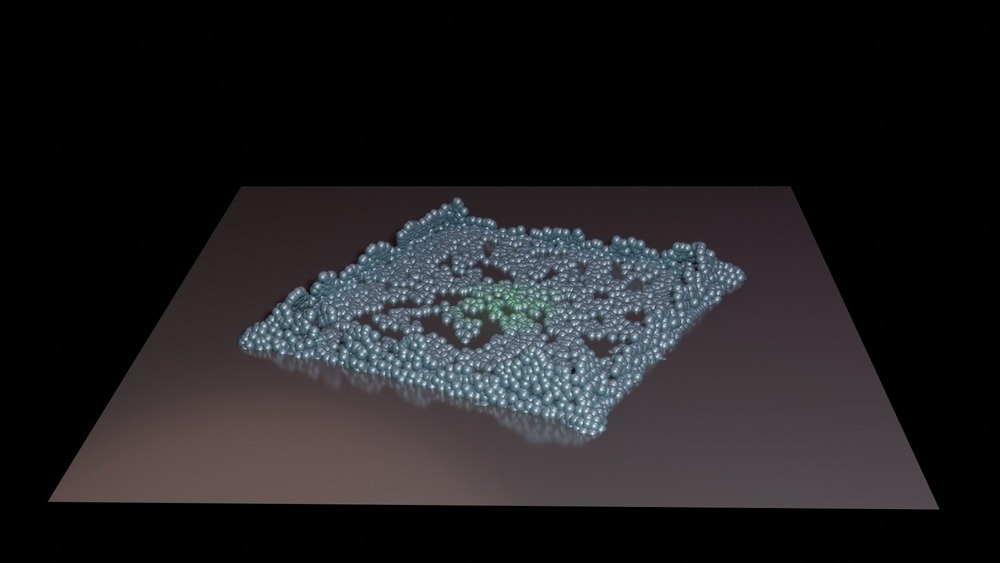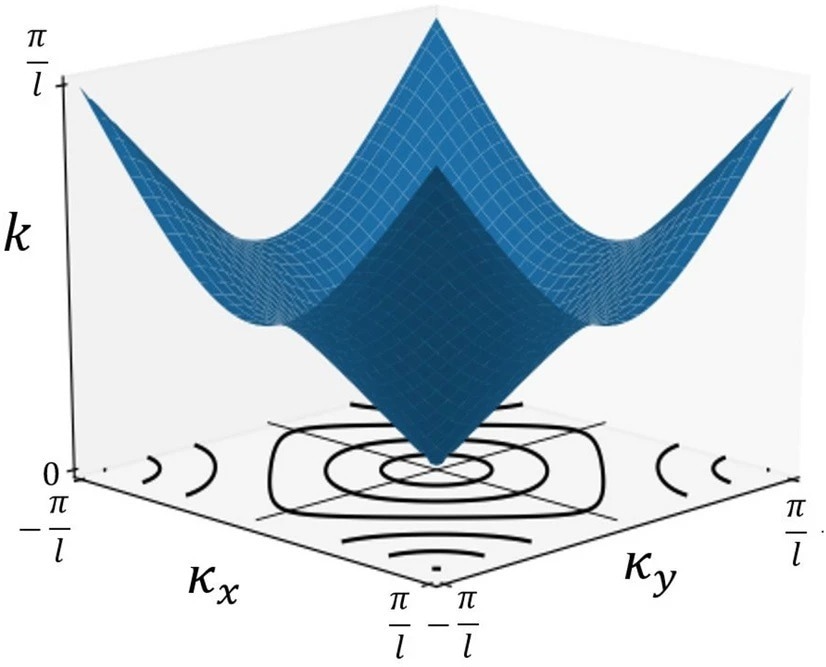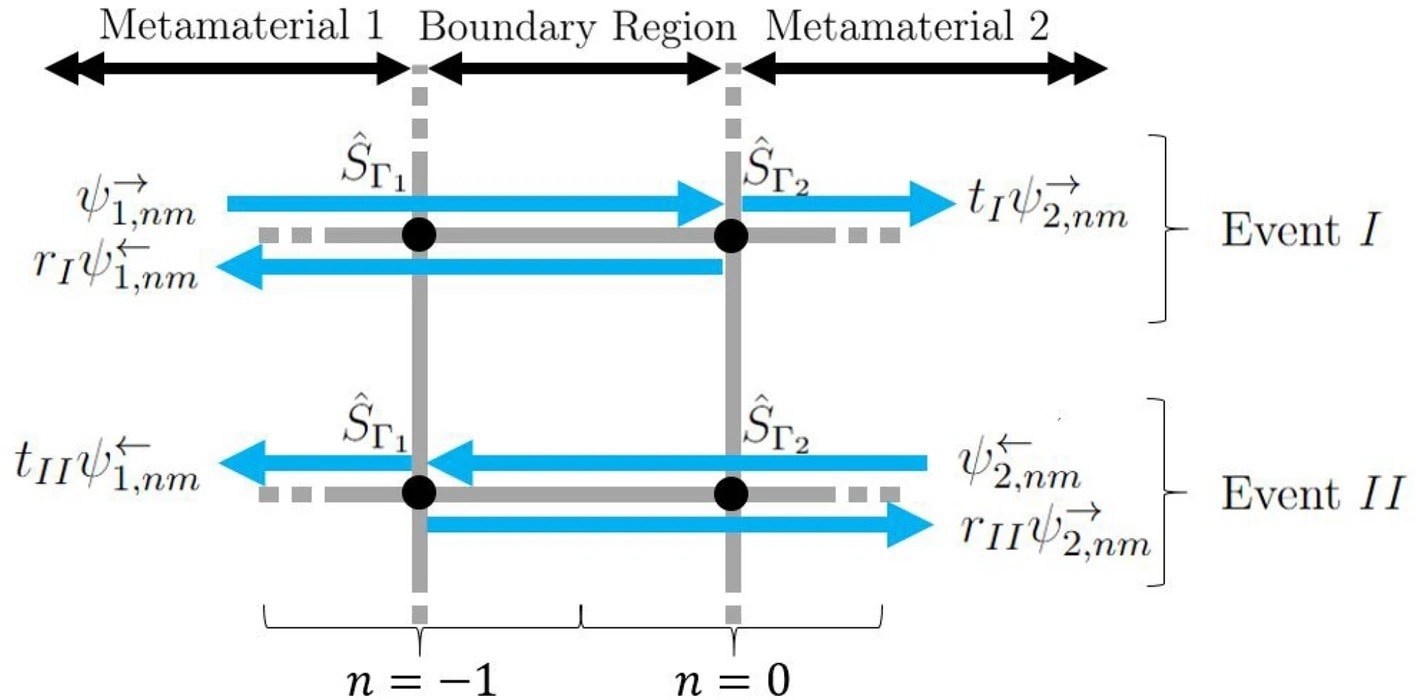A new paper in the journal Scientific Reports has explored the question of using quantum graph modeling for metamaterial design. Authored by scientists from the University of Nottingham and LMSD in Belgium, the research has presented a flexible design tool for manufacturing metamaterials with intriguing, exotic properties and commercial potential.

Study: A quantum graph approach to metamaterial design. Image Credit: vrx/Shutterstock.com
What are Metamaterials?
First theoretically proposed in 1968 by Veselago et al., metamaterials possess exotic and intriguing properties and wave effects. These materials possess a negative refractive index due to both their permeability and permittivity being less than zero. Internal electromagnetic waves in metamaterials have both group and anti-parallel velocities due to a balance between their Poynting vector and wave vector.

Three examples of open quantum graphs are shown. (a) Represents a cross resonator, (b) a ring resonator and (c) some zig zag structured resonator. The edges between vertices are depicted in black and open leads in grey. Image Credit: Lawrie, T et al., Scientific Reports
Metamaterials were first produced in 2000 by Pendry et al. This initial research proposed lenses that could theoretically provide perfect light focusing, overcoming the diffraction limit that conventional lenses possess. Smith et al. experimentally verified these materials, with an intense research focus on fabricating resonators with different arrangements and designs, leading to constructs with a wide variety of wave effects.
The interplay between the wavelength of the material and the unit cell’s scale governs the function and behavior of metamaterials. Modifying the material’s resonant or structural elements produces tailored wave effects.
Analyzing and Simulating Metamaterials
There is still much debate in research on which constituents are required in metamaterials. Various modeling techniques have been applied to help guide the characterization and design of this novel class of materials.
Techniques such as finite element analysis and transmission line models have been used in research to provide insight into producing tailored wave effects in metamaterials. However, many of the applied modeling and simulation techniques are hindered by their time-consuming nature, facilitating the need for computationally inexpensive and simple methods.

The band diagram for a lattice without resonant elements. Shown are iso-frequency contours for various values of k in the κx, κy plane. Image Credit: Lawrie, T et al., Scientific Reports
Quantum Graph Approaches
Introduced in 1997, quantum graphs study quantum and wave effects, making them a valuable tool for numerous innovative research areas. This technique is incredibly versatile and graphs can be easily constructed. Additionally, quantum graphs have finite dimensionality and the semiclassical expressions involved enhance the exactness of modeling results.
In a quantum graph, vertices acting as point scatterers within a network are connected by one-dimensional bonds. Within this network, waves can travel freely. The chosen properties of the point scatterers govern wave transport throughout the network. Changing the network elements allows for the customization of wave transport.
Quantum graphs can be applied to the modeling of quantum chaos, coupled plate vibration, and quantum algorithms. Additionally, quantum graph modeling can be used to investigate the scattering matrix.

Boundary region between metamaterials 1 and 2, understood as all right(r) edges for n = −1 and all left (l) edges for n = 0. Here, wave scattering from the boundary is divided into event I and II, where rp and tp represent reflection and transmission amplitudes for event p = I or II. Image Credit: Lawrie, T et al., Scientific Reports
The Study
The study has focused on the use of quantum graph modeling to investigate design directions for metamaterials, which improves on previously reported modeling and simulation methods. The theory of quantum graphs uses concise language, which is ideally suited to the description of these innovative materials.
The researchers have developed a 2D space-embedded infinite quantum graph to model target metamaterials. Through the use of additional vertices and edges in the model, it can be easily translated into a three-dimensional space. By adjusting the node scattering matrix and graph metric parameters, the authors can use the approach to model a plethora of nontrivial wave effects.
Manipulation of the graph’s band diagrams demonstrated nontrivial effects such as beam steering and positive/negative refraction. Several aspects have been covered in the paper, including open quantum graph set ups, equations for dispersion curves and plane wave solutions, available parameter space for band engineering, and Gaussian beam representations of wave solutions.
Study Conclusions
The use of an open, quantum graph-based scattering model in the paper to model resonant elements helps retain a connection with the element’s fundamental geometrical structure. Thus, this approach improves the investigation of nontrivial and exotic wave effects, dispersion curves, and band diagrams. The proposed method is fast and flexible, with the ability to tailor graphs to evaluate 2D square lattice-embedded resonant element proposals.
Graph-based metamaterial modeling and construction principles have been introduced, including the set up. By using this strategy, the authors have demonstrated how to obtain beam-like and plane wave solutions in a medium with infinite theoretical and experimental possibilities.
Moreover, the authors have demonstrated interface boundary condition handling and have shown that results can be generalized to N-layered media. Bloch’s theorem can be used to reduce computations to low-dimensional matrix problems.
Overall, the paper presents an initial study of using simple and flexible quantum graph-based modeling approaches to the investigation and rational design of metamaterials with a variety of tailored wave effects. Further research on modeling special wave effects will be presented by the authors in the future.
Further Reading
Lawrie, T., Tanner, G. & Chronopoulos, D (2022) A quantum graph approach to metamaterial design Scientific Reports 12 Article no. 18006 [online] nature.com. Available at: https://www.nature.com/articles/s41598-022-22265-2
Disclaimer: The views expressed here are those of the author expressed in their private capacity and do not necessarily represent the views of AZoM.com Limited T/A AZoNetwork the owner and operator of this website. This disclaimer forms part of the Terms and conditions of use of this website.